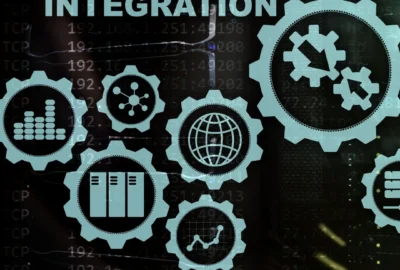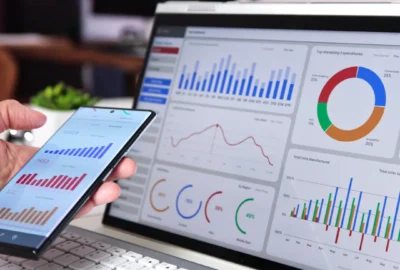If you’re a finance manager or operations leader, you already know the feeling: it’s the end of the month, and you’re staring down another long night of hunting for mismatched numbers. Your inbox is flooded. Your team is stressed. And yet again, the monthly report reconciliation process is running behind.
You’re not alone. Whether you’re working in private lending, a wealth management firm, or part of a busy finance team at an investment fund, the same challenge comes up: manual reconciliation eats up time, drains focus, and introduces unnecessary risk.
And the worst part? You’re not behind because you lack discipline or talent. You’re behind because the report reconciliation process most teams rely on is broken. It’s stuck in spreadsheets, clogged with cut-and-paste work, and dependent on people cross-checking systems that don’t talk to each other.
What if there was a simpler way?
That’s what this article is all about. We’re not going to talk about tech buzzwords. We’re going to walk through a smarter, clearer way to handle monthly report reconciliation that’s faster, more accurate, and—most importantly—less stressful for everyone involved.
Because the real cost of this isn’t just time or money. It’s burnout and mistakes that lead to reputational damage. It’s your team being pulled away from higher-value work.
Now let’s break this down.
Improve your Finance Processes.
Understanding the Monthly Report Reconciliation Process
Before we fix it, let’s get clear on what monthly report reconciliation really involves.
What Is Report Reconciliation?
Report reconciliation is the process of comparing financial records from multiple systems or sources to ensure everything matches up. It’s essential for:
- Verifying transactions
- Detecting discrepancies
- Preparing accurate monthly financial reports
The Manual Process (And Why It’s So Frustrating)
Here’s what a typical manual report reconciliation process looks like:
| Step | Task | Pain Point |
|---|---|---|
| 1 | Export data from different systems | Time-consuming, often formatted inconsistently |
| 2 | Compare records manually | Prone to human error, takes hours or days |
| 3 | Flag and investigate mismatches | Requires constant back-and-forth between teams |
| 4 | Update reports and finalize figures | Stressful under tight deadlines |
The pressure to close the books accurately and on time creates chaos. It’s no wonder financial close timelines slip.
Why Finance Managers Should Embrace Automation
Manual report reconciliation isn’t just outdated—it’s risky. Let’s look at what you’re up against:
- Constant delays
- Mistakes that slip through
- Staff burnout from repetitive work
- Missed opportunities to focus on forecasting or strategy
What if you could remove the bottlenecks?
That’s where automation (the simple, human kind) comes in. It doesn’t require a technical degree. It just means building smarter workflows so your systems handle the grunt work—freeing your team to focus on what matters.
Key Benefits of Automated Monthly Report Reconciliation
Let’s break down what finance teams gain when they move to a better report reconciliation process.
| Benefit | Impact |
|---|---|
| Faster Close Cycles | Reconciliations happen in hours—not days |
| Fewer Errors | Automated checks mean fewer misstatements |
| Lower Costs | Less time spent = lower labor costs |
| Team Satisfaction | Reduced burnout from repetitive, manual tasks |
| Better Decisions | Faster access to clean, accurate data supports smarter decision-making |
All this comes without the need for complex tech rollouts. It’s about working smarter—not harder.
Essential Features to Look For in an Automated Reconciliation Solution
When evaluating a solution for report reconciliation, look for features that actually solve your team’s pain points—not add to them.
| Feature | Why It Matters |
|---|---|
| Smart Matching | Quickly finds and matches transactions without manual input |
| Customizable Workflows | Adapts to your team’s structure, not the other way around |
| Easy Collaboration | Enables quick notes, comments, and handoffs across teams |
| Audit Trails | Keeps a record of every step taken |
| Minimal Setup Time | No months-long IT projects—just plug in and go |
Integrating Automation Tools with Existing Financial Systems
A huge win for any finance team is when report reconciliation tools work with what you already use—like your ERP or accounting software.
Choose tools that offer smooth integration so your data flows freely without re-keying or exporting/importing every time.
| Integration Type | Benefit |
|---|---|
| ERP Integration | Pulls financial data directly into the reconciliation tool |
| Accounting System Sync | Ensures figures always reflect the latest transactions |
| Cloud Connectivity | Enables real-time updates and cross-team access |
Real-Time Insights and Reporting Dashboards in Automated Reconciliation Solutions
The best solutions offer real-time dashboards that tell you, at a glance, where things stand.
You’ll know:
- What’s been reconciled
- What’s still outstanding
- Where discrepancies are
This isn’t about flashy graphs—it’s about getting answers fast so you can act fast.
| Dashboard Feature | How It Helps |
|---|---|
| Real-Time Status View | Shows reconciliation progress instantly |
| Exception Alerts | Flags mismatches automatically |
| Drill-Down Options | Let you see the “why” behind any discrepancy |
Leveraging AI Technology to Enhance the Effectiveness of Reconciliation Tools
While you don’t need a tech background to use it, some modern report reconciliation tools quietly use AI behind the scenes to help:
- Spot unusual transactions
- Predict recurring patterns
- Flag potential risks before they become problems
You don’t have to configure any of it. It just works in the background to make your work cleaner and safer.
Ensuring Compliance and Audit Readiness through Automated Monthly Report Reconciliation Solutions
Accurate report reconciliation is the foundation of financial compliance. Automation helps:
- Keep a log of every step and change
- Maintain consistency across all reports
- Provide clean documentation for auditors
| Compliance Feature | Benefit |
|---|---|
| Full Audit Trail | Every action is logged and traceable |
| Standardized Processes | Ensures consistent reconciliation across months |
| Instant Report Access | Auditors can get what they need without delays |
Popular Software Solutions for Automating Monthly Report Reconciliation
Here are some widely used tools that help finance teams streamline report reconciliation:
| Software | What Stands Out |
|---|---|
| Trintech CoPilot | Designed for quick, accurate close cycles |
| HighRadius Financial Close | Ideal for large finance teams with high transaction volume |
| FloQast AutoRec | User-friendly interface and strong collaboration features |
Each of these is built with finance professionals in mind—not just IT teams.
Practical Steps Towards Successful Implementation
If you’re thinking about upgrading your report reconciliation process, here’s how to get started:
| Step | Action |
|---|---|
| 1. Identify Pain Points | Where are you spending the most time or making the most errors? |
| 2. Choose User-Friendly Tools | Go for simplicity over complexity |
| 3. Involve Your Team Early | Help them see the value and gain buy-in |
| 4. Start Small | Pilot with one report before scaling up |
| 5. Measure Results | Track time saved, accuracy, and team feedback |
With the right approach, change doesn’t have to be painful.
The Future of Finance: Embracing Simplicity Over Stress
Here’s the truth: monthly report reconciliation doesn’t have to be a dreaded, drawn-out process.
You don’t need a big IT budget or a team of data scientists. You just need the right tools—and a willingness to say, “We don’t have to keep doing this the hard way.”
When finance managers embrace smarter systems, they free themselves and their teams to focus on higher-value work. Mistakes drop. Speed increases. And confidence in the numbers goes way up.
Because at the end of the day, finance isn’t just about balancing numbers. It’s about trust, insight, and being able to say: “These numbers are right—and we didn’t have to lose sleep getting there.”
Featured image: Generated from Canva



